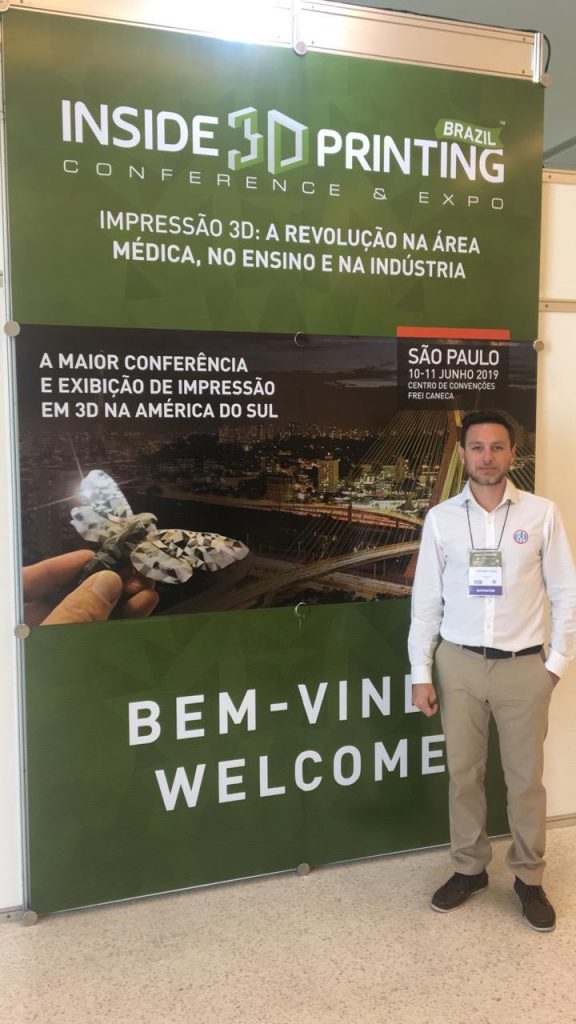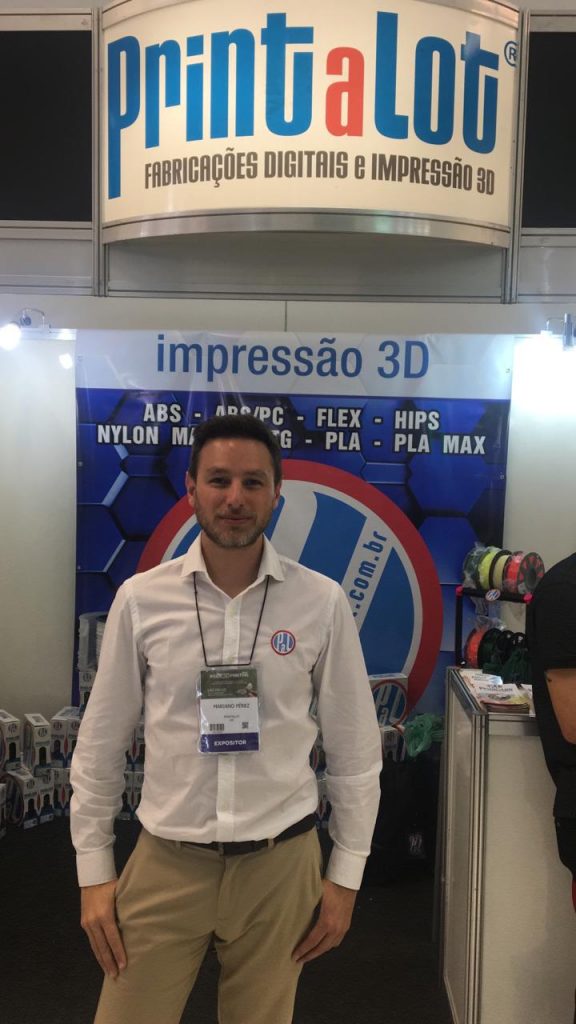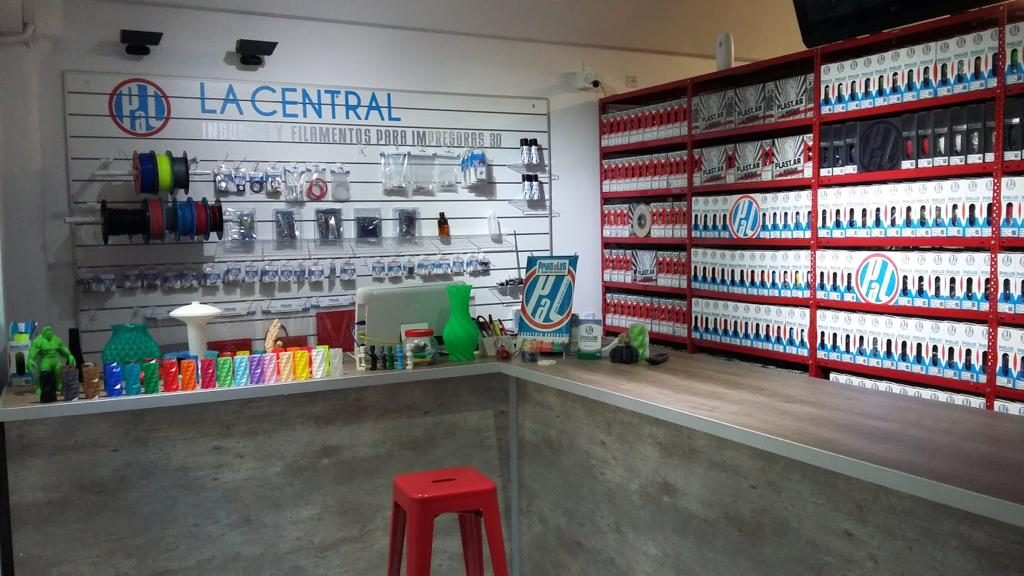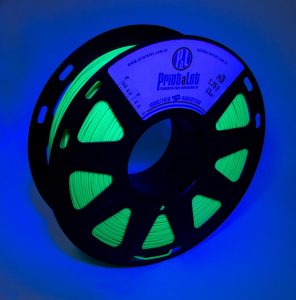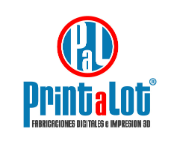 Today, the Latin American 3D printing ecosystem is beginning to mimic what developed countries have been doing for the past decade. Albeit at a slower pace, some companies have sprung out of a need to fill a void, like Printalot, a pioneer in 3D printing filament in Argentina and a significant supplier to 3D printing enthusiasts, companies and academia in Brazil. When they started their business, back in 2013, there was barely an industry, most of the 3D printers were home-made and the filament was hard to come by. Growing demand for the product and an interest in the technology spurred industrial engineers and best friends Mariano Pérez and Mariano Scian to create Printalot.
Today, the Latin American 3D printing ecosystem is beginning to mimic what developed countries have been doing for the past decade. Albeit at a slower pace, some companies have sprung out of a need to fill a void, like Printalot, a pioneer in 3D printing filament in Argentina and a significant supplier to 3D printing enthusiasts, companies and academia in Brazil. When they started their business, back in 2013, there was barely an industry, most of the 3D printers were home-made and the filament was hard to come by. Growing demand for the product and an interest in the technology spurred industrial engineers and best friends Mariano Pérez and Mariano Scian to create Printalot.
At the time, limited imports, high taxes, and tiny market demand were a bad combination, seriously limiting the amount of material available for 3D printing. Eventually, more entrepreneurs and younger generations that experienced 3D printing elsewhere became adamant in bringing the technology to Argentina, and like many endeavors born out of necessity, Printalot came around at just the right time. Both Scian and Pérez are interested in expanding their production process to Brazil in the next three to five years, so they are seriously looking at that market, which holds the most potential in the region. They are also participating in the sixth edition of South America’s largest 3D printing event, “Inside 3D Printing Conference & Expo” at São Paulo’s Frei Caneca Convention Center. Brazil is one of the best countries to market their product since local printer manufacturing has grown considerably in recent years and pioneering initiatives have seen researchers opening up the code for designing and building 3D printers. Furthermore, with 54% of plastic product manufacturing companies using this technology, it’s a great place to be.
“Our biggest consumer market in Argentina today is 3D printing hobbyists. Although many of them soon realized that they could develop a product with their machines. So that’s what’s happening today, many young people trying to market their 3D printed pieces and becoming entrepreneurs,” said Pérez in an interview with 3DPrint.com.
Brazil and Argentina are not their only markets, the company also sells to neighboring Chile, Bolivia, Paraguay and Colombia; and a few years ago they began marketing components to assemble printers, spare parts and even became resellers of European SLS and SLA machines, like Netherlands-based Ultimaker, UK’s Photocentric, and China’s Geetech, Trideo and Trimaker.
“But manufacturing in Argentina is hard. The process itself is not challenging because we are able to find trained personnel and we are engineers so a great deal is covered, especially when it comes to making modifications to our machines. However, the biggest problems are the extremely high tax levels and continuous shifts in economic policies that affect every stage of the local production. Looking back at the past three years, we have encountered serious financial conflicts. Due to the currency devaluation (of the Argentinian Peso) our exported product was quite competitive helping us to increase the export quota. But like most good things in unstable economies don’t last, we soon had to face new export taxes (of up to 8%) on manufactured goods, loosing much of the competitive edge we had previously gained,” suggested Pérez.
Printalot’s experience with fluctuating economic scenarios could give us a hint onto why it is taking so long for some emerging countries to become market leaders in their regions, and a big part of why so many companies, professionals, and researchers are moving to countries that protect innovation and development. But Pérez and Scian made a huge effort to bring their idea to life and even financed the start-up on their own, since loans are hard to come by and even harder to pay off in Argentina.
Like most PLA 3D printing filaments on the market today, Printalot’s line of best-sellers is made from natural corn starch. Pérez claims that they “chose it because it is a safe, biodegradable, plant-based plastic.” The environmental impact of corn-based plastics is still not clear. Depending on the type of polymer used to make it, discarded bioplastic must either be sent to a landfill, recycled like many petroleum-based plastics, or sent to an industrial compost site, and even then, there is no assurance that the degrading process will be easy. Still, plastics made out of natural raw materials seem more sustainable than petroleum-based ones. Cargill is the original inventor of PLA (polylactic acid), a polymer derived from natural plant sugars and marketed by the joint venture as NatureWorks PLA and Ingeo fibers, and where Printalot gets their share of input material to create the filament. With very few bio-based PLA plants in the world and an increase in their demand, Cargill might need to expand production soon.
“Most of our buyers are looking for products made with renewable energies. Sustainability is at the forefront almost everywhere, and people want to have compostable, biodegradable filaments. Plus, the 3D printing industry has always had an awareness for the environment, which is why we have considered using a planet-friendly material from the get-go, knowing that our market buyers are thoroughly analyzing what to purchase,” he continued. “When Scian suggested the idea of creating filament, we immediately thought about using my family’s cable manufacturing business, considering that the extrusion of polymers is a mechanical industrial process also used in cable-making. So it was an easy transition and we adapted the machines and immediately thought about eco-friendly products to use.”
Printalot comes from years of experience in plastic extrusion, their parent company, Felrro, was founded on the extrusion of copper-filled certified plastic cables and their vast experience came in handy for their newer undertaking. Their PLA is sold at $14 per kilo and comes in 40 different colors. The ABS filament, which works great in really low temperatures, is also $14 per kilo and available in a wide array of colors. UV and Daylight resins can also be found at their shop in the city of Buenos Aires for $133 per kilo. Their shop, located in a very popular neighborhood, is one of the best places to shop for supplies.
For local companies like Printalot, 3D printing conventions are a great way to make their product well-known, especially among enthusiasts, and Inside 3D Printing will help bring together the regional community to share knowledge, increase networking and encourage investment. This event is the best launch pad for both domestic companies looking for a global audience and international companies looking to tap the local markets. Much like the latest Inside 3D Printing in Seoul and last years Inside 3D printing in Mumbai, the Brazil version will create real interest, hopefully attracting some of the major global players in 3D printing, local governments, universities, students and anyone interested in the disruptive technology.
Subscribe to Our Email Newsletter
Stay up-to-date on all the latest news from the 3D printing industry and receive information and offers from third party vendors.
You May Also Like
3D Printing News Briefs, April 13, 2024: Robotics, Orthotics, & Hypersonics
In 3D Printing News Briefs today, we’re focusing first on robotics, as Carnegie Mellon University’s new Robotics Innovation Center will house several community outreach programs, and Ugogo3D is now working...
Rail Giant Alstom Saves $15M with 3D Printing Automation Software 3D Spark
3D Spark has entered into a three-year deal with the rail giant Alstom. Alstom, a transport behemoth with annual revenues of $16 billion, specializes in the manufacture of trains, trams,...
Meltio Expands Global Reach with New Partnerships in the Americas and Europe
Spanish 3D printing manufacturer Meltio has expanded its sales network across the globe. With the addition of three new partners in the United States, Brazil, Argentina, and Italy, Meltio aims...
3D Printing Webinar and Event Roundup: April 7, 2024
Webinars and events in the 3D printing industry are picking back up this week! Sea-Air-Space is coming to Maryland, and SAE International is sponsoring a 3D Systems webinar about 3D...


